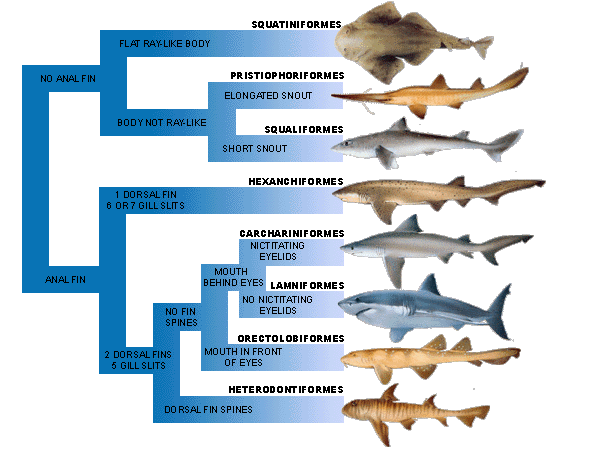|
How Sharks are classified?
Identification of the 380 or so different sharks is based upon the science of taxonomy, which basically divides all animals into groups, sub-groups and finally into individuals. Sharks are part of the phylum - Chordata, the class - Chondricthyes, which also includes rays and chimaeras (these differ from practically all other fish by having a cartilaginous skeleton). Here, the sharks and rays separate further from the chimaeras into the Elasmobranchii. Sharks are separated into the eight orders shown below, according to their external appearance, i.e. number and position of fins, number of gill slits, position of mouth etc. Further classification results in 30 different families, approximately 99 genre and then to the 380 or so individuals. The numbers given for genre and individual species can be no more precise because, experts from all over the world are identifying new species and also realising that different species are actually the same, i.e. Dr L Compagno identified the Soupfin shark, Vitamin shark and the Australian school shark as being the already known Tope shark - Galeorhinus galeus. |
|
|
How it all Works?
These eight orders are all based on external body features for a quick differentiation. Some of the Squaliformes may appear very similar to some of the Carcharhiniformes, but the lack of anal fin on the Squaliformes separates them immediately. Whilst a Great White is easy to distinguish from a Grey Reef shark, it is only the presence of a nictitating eyelid that puts the Lamniformes into a separate order. Identification of individual species within an order can sometimes be very difficult, even for experts, especially if the shark is being observed in the wild. Some of the 'Reef Sharks', i.e. the Carcharhiniformes can be difficult to identify from each other without examining their teeth. Below is a table of the 8 orders split into the 30 families, with a classic example of each.
|



